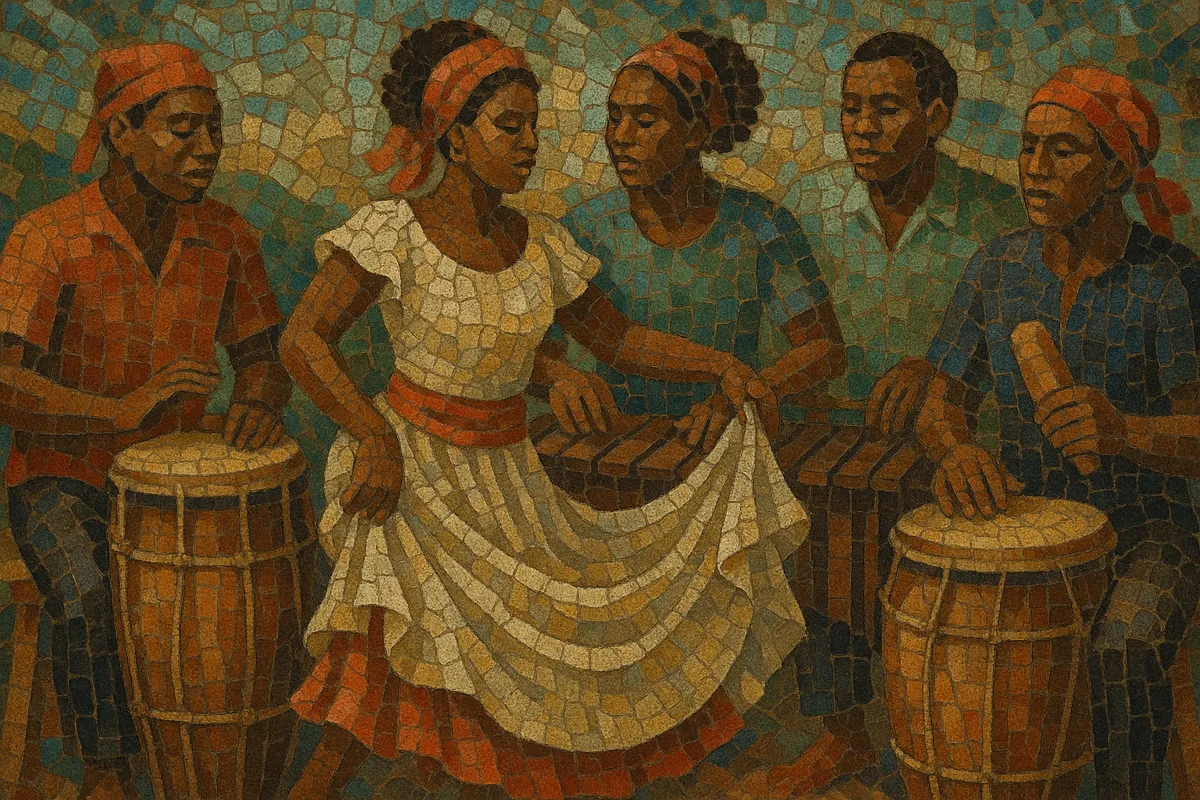Currulao is an Afro-Pacific music and dance tradition from Colombia’s Pacific coast, centered around the marimba de chonta, hand drums (cununos), bass drums (bombos), and the guasá shaker. It is typically in a lilting 6/8 metre with interlocking polyrhythms, call‑and‑response vocals, and cyclical marimba ostinatos that create a trance-like forward motion.
The genre is performed at community festivities, patron saint celebrations, and social dances, and it also has close ties to ritual song traditions in the region. While strongly rooted in Afro‑Colombian culture, currulao is also heard in northern Ecuador, and in recent decades it has informed contemporary fusions and urban styles from Cali and the wider Pacific region.
Currulao emerged among Afro‑descendant communities on Colombia’s Pacific coast during the colonial period, consolidating through the 1800s. Enslaved and free Black populations preserved West and Central African musical logics—polyrhythm, call‑and‑response, and communal dance—while adapting them to locally available instruments, most notably the marimba de chonta made from palm wood and bamboo resonators.
Through the 20th century, currulao diversified regionally (Chocó, Valle del Cauca, Cauca, Nariño) with distinctive drumming patterns and song repertoires. Community builders—marimberos, singers, and drum makers—transmitted the tradition orally. Radio and festivals in cities like Cali and Buenaventura gradually brought currulao from riverine towns to urban stages.
From the late 20th century, cultural policies, research, and festivals (e.g., Petronio Álvarez Festival in Cali) elevated currulao as a symbol of Afro‑Colombian heritage. Master marimba players such as José Antonio Torres “Gualajo” helped codify techniques and repertory, while ensembles formalized performance practice for stage and recording.
In the 2000s–2020s, currulao’s marimba-and-drums foundation inspired crossovers with salsa, pop, hip hop, and electronic music. Groups from Timbiquí, Guapi, Tumaco, and Buenaventura popularized the sound nationally and internationally, helping anchor Pacific identity in Colombia’s broader musical landscape.


